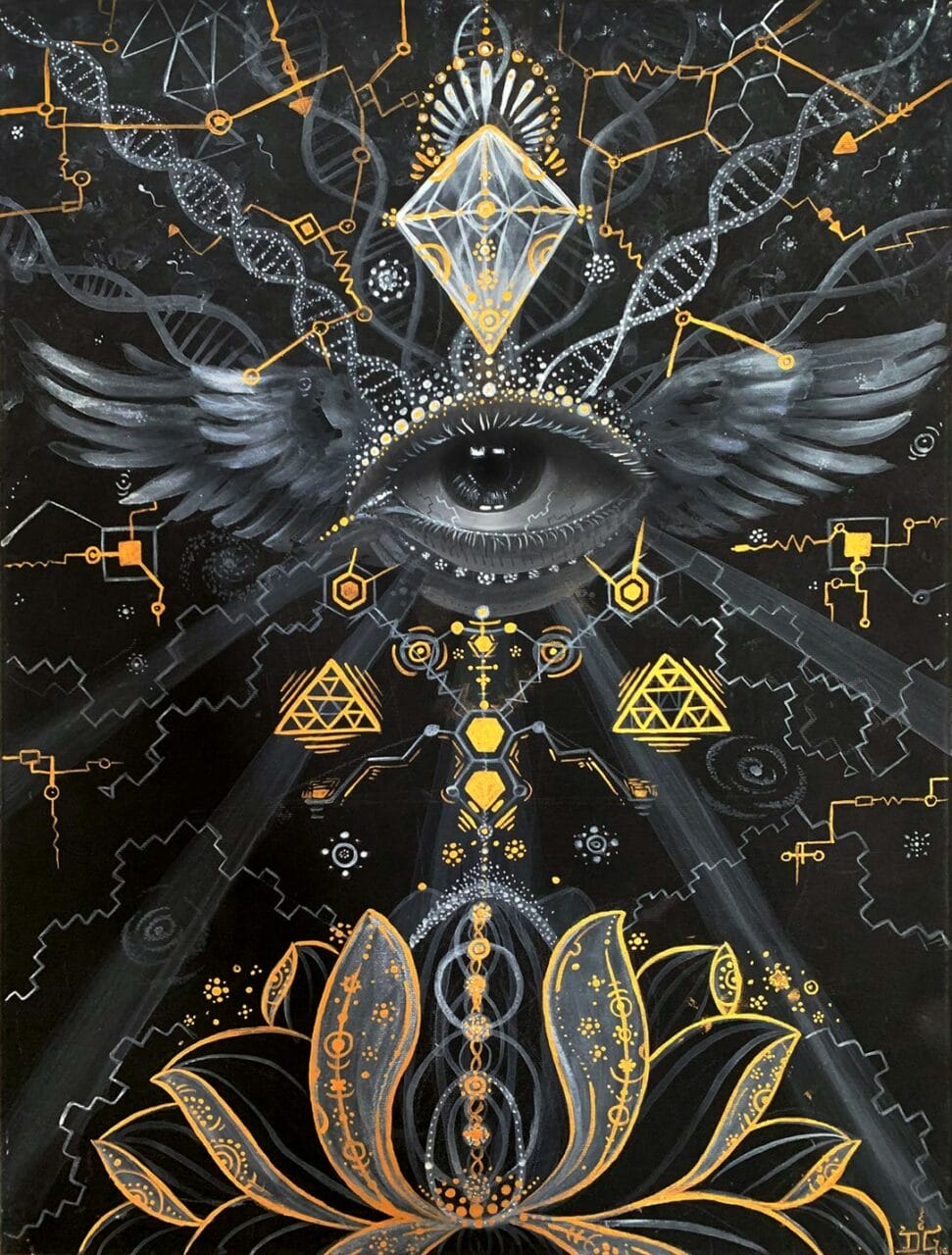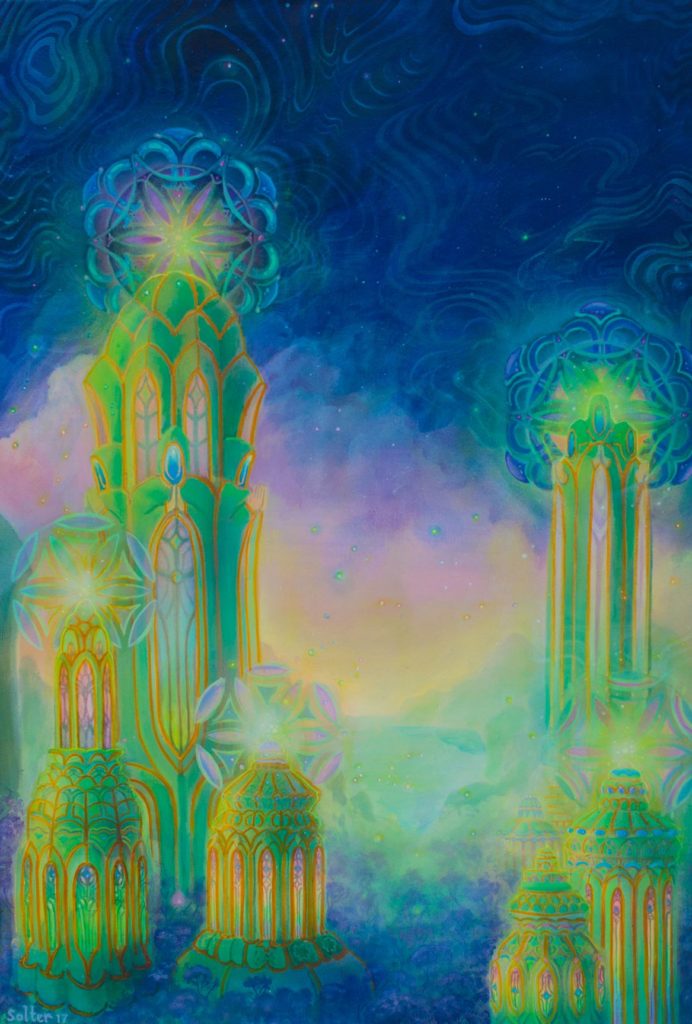
© Uni Kaya
Historical Background of Shrooms
Shrooms, distinctive mushrooms with over 200 different species, have been around since 9000 BC according to historical documents. They contain psilocybin, a compound that produces hallucinogenic effects which can lead to altered perception, visual and auditory hallucinations, and deeply spiritual experiences. These mushrooms have long been used in spiritual ceremonies, rituals, and practices by various cultures and tribes. A large number of these historical uses originated in North and South America.
Shrooms in Ancient eras
Over the course of history, many cultures have used natural psychedelics. Evidence from the Sahara Desert suggests that humans were using Psilocybe Cubensis more than 7000 years ago. Archaeological finds show depictions of this psychoactive substance in prehistoric art across various regions. For instance, indigenous tribes of North Africa in the Sahara have included it in their paintings from around 9000 BC. The famous Selva Pascuala mural rock painting in Spain, estimated to be 6000 years old, indicates the use of Psilocybe Hispanica in religious rituals. The influence of these substances on our cultural evolution, religion, art, societal norms, and everyday life is increasingly noticeable. They have undeniably left a deep impact on our culture and society.
A Brief History of Magic Shrooms Usage
Looking back in time,magic Shrooms have been utilized for a long duration. This mind-altering substance, which we recognize today, has been around for several centuries, with a wide range of practices associated with its use. Who can resist the gifts of nature? It’s about time for Magic Mushrooms Ottawa Canada to delve into the historical journey that has brought Shrooms to its current standing.
Main Highlights
- Historically, dried Shrooms have been employed in traditional rituals and spiritual healing. Nowadays, they are used as a treatment for mental health disorders.
- Shrooms became a staple of the hippie culture, playing a significant role in the psychedelic revolution and encouraging their recreational use.
- Notable figures such as Wasson, Sabina, and McKenna brought psilocybin into the contemporary world.

© Jonathan Solter
Endorsing the Stoned Ape Hypothesis
The Stoned Ape Hypothesis was put forth by Terence McKenna, suggesting that psilocybin might have contributed to human evolution, specifically cognitive development. Criticisms aside, the intriguing nature of this theory is undeniable.
Historic Societies and Sacred Rituals
Ancient societies depicted cubes in symbols, art, and statues, indicating the ceremonial use of Shrooms. The Mayans and Aztecs used it to connect with supernatural beings, including gods. In the culturally diverse Aztec society, it was referred to as “teonanácatl“, meaning “flesh of the gods”. The concept of a psychedelic experience was alien to them, causing them to view it as a divine entity. Moving north to Siberia, hallucinogenic Shrooms were used by Siberian shamans. They specifically used the hallucinogenic compound (Shrooms) named “Amanita Muscaria” for spiritual healing and traditional practices, despite its toxic nature. This use dates back almost ten thousand years. In African tribal rituals, particularly among the Congo and Zimbabwean tribes, cubes were used to communicate with ancestors, induce visions, and promote spiritual healing. These ancient societies lay the groundwork for contemporary psilocybin use. The regard for this substance in these cultures came from its divine link and its ability to trigger mystical experiences.
Myths and Folklore about Shrooms
Numerous accounts, including those by Gordon Wasson, highlight the connection between Shrooms and the mystical world, underlining its role in folklore and mythology as a medium for divine communication and enlightenment. In ancient India, the Soma—a ceremonial drink mentioned in the Vedas—was believed to provoke altered states of consciousness. Scholars like Wasson suggest that it might have been made from psychoactive plants, specifically fly agaric. Some even argue that this ancient drink could have contained a mixture of different plants. Regardless of its origins, the psychedelic history indicates that Soma facilitated the appearance of sacred symbols during rituals, symbolizing a portal to higher wisdom or spiritual enlightenment.
The Contemporary Era
A Brief Overview of the
Origins
Historical records from before the arrival of Europeans show that the Mayans and Aztecs utilized psilocybin Shrooms. However, Spanish rulers during the 15th and 16th centuries condemned its use as barbaric and subsequently outlawed it. Despite this prohibition, shamans clandestinely continued the ingestion of magic Shrooms, thus preserving their cultural heritage for over four centuries.
Reintroduction to the Western World
The reemergence of these substances in the Western world took place in the 1950s, thanks to the groundbreaking efforts of people like R. Gordon Wasson, Roger Heim, and Albert Hofmann. During a journey to Mexico, they were able to isolate the two psychedelic compounds (psilocybin and psilocin) present in the Shrooms they obtained from the Mazatec tribe. Wasson then widely shared his discoveries, uses, and understandings of magic Shrooms in Life magazine. His articles and personal stories led to the substance being recognized as a potent hallucinogenic. By the time the 1960s arrived, the substance had become emblematic of the Hippie culture and was regarded as a pathway to spiritual enlightenment. However, its use also stirred substantial controversy and triggered a shift in the recreational use of hallucinogenic substances.
Further Development: Global Prohibition
In 1971, the United Nations Convention on Psychotropic Substances classified psilocybin as a Schedule 1 illegal drug, alongside Lysergic Acid Diethylamide and N, N-Dimethyltryptamine. They were all considered to have no therapeutic value and a high risk of misuse. This led to widespread criminalization in Western nations, such as Canada and the U.S., severely limiting the spiritual and therapeutic uses of the substance.
The Contemporary Revival of Psilocybin
More recently, there has been a softening of the strict laws controlling the use of psilocybin, beginning with its decriminalization. This shift aligns with the UN’s provision for treaty member countries to regulate the substance according to their own judgement. In tandem, an escalating amount of research and clinical trials on psychedelics and consciousness robustly backs the potential medicinal uses of psilocybin. A 2021 study investigating the therapeutic use of psychedelics suggests that the 1970 ban considerably hindered further research. However, an initial study in 2004 revitalized interest in psilocybin, presenting potential applications in neuropsychiatry, especially for the treatment of mental health conditions such as:
- Depression, Anxiety, and Stress
- Post-traumatic Stress Disorder (PTSD)
- Obsessive-compulsive Disorder (OCD)
- Substance Misuse (Aiding in Recovery from Addiction)
- Problematic Alcohol Consumption and Drugs)
Media and Art’s Influence
Conversations around psychedelic cubes have expanded to the point where they are represented in a multitude of formats. Various forms of media, art, and literature have reignited the community’s fascination with these substances. Movies such as “Fantastic Fungi” by Director Louie Schwartzberg, along with documentaries that delve into their therapeutic aspects, have enhanced the public understanding of their psychological and physical effects. Michael Pollan, the author of “How to Change Your Mind,” has investigated the application of psychedelics for mental health and spiritual evolution, thereby reviving interest in their societal and healing value.
Prominent Historical Advocates of Fungi
- María Sabina: A Mazatec shaman and poet from Mexico, Sabina was instrumental in introducing cubes to the Western world. She permitted Wasson to observe her Shrooms rituals.
- Gordon Wasson: As a writer, Wasson gained recognition for drawing worldwide attention to the substance. His comprehensive recounting of his experiences with Sabina contributed to a broader understanding of its local use.
- Terence McKenna: A leading champion of psychedelics, McKenna was pivotal in emphasizing their cultural and philosophical significance. His speeches, writings, and research popularized the “Stoned Ape” theory, presenting it as a cognitive development tool that shaped society.
The Timeline – A Concise Overview
with TRD.
| Prehistoric | Prehistoric usage is depicted in stone art discovered in the Sahara, Africa | |
| Ancient | The Maya and Aztec civilizations incorporated teonanácatl in their religious and spiritual rituals. | |
| 16th Century | Use was discouraged due to its association with Indigenous beliefs | |
| 18th Century | In 1799, the “intoxicating” effects of the substance came to light when four children inadvertently consumed Psilocybe Semilanceata, highlighting the potential negative impacts of its use. | |
| 20th Century | The substance was brought to the Western world by Wasson and Sabina, sparking the psychedelic revolution among the hippie culture. The UN legalized its possession and consumption. | |
| 21st Century | Clinical trials to verify its medicinal potential are
| Health Canada has authorized the use of this substance under the Special Access Program, as demand for it increases. |
Embracing the Psychedelic Era and Beyond: Purchase Shrooms from Magic Mushrooms Ottawa Canada
At Magic Mushrooms Ottawa Canada, we’re committed to promoting the benefits of cubes, backed by solid scientific evidence. We believe in their potential for global recognition. Our online Shrooms store at Magic Mushrooms Ottawa Canada is geared to support this evolving landscape. We offer a wide array of products that inspire our customers to embark on the transformative and therapeutic journey of psilocybin. Secure your preferred items from Zoomies today.
Commonly Asked Questions
Amanita Muscaria does not contain the active ingredients found in Psilocybe Cubensis. Instead, it contains psychoactive compounds such as muscimol and ibotenic acid. There’s a popular theory that Soma originated from a combination of different psychoactive plants. Ayahuasca, like Soma, alters consciousness. The only link between the two is that Soma is viewed as an analogue of Ayahuasca. It was scrutinized for possible Shrooms poisoning after being classified as a toxic Shrooms. Today, it is recognized as the Psilocybe Mexicana.

